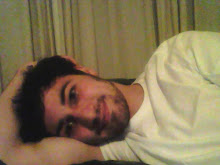Exorcising his personal demons, Lars von Trier has purged one of the most mesmerizingly cinematic films of the year; Antichrist does not disappoint and must be experienced
Lars von Trier / Denmark / 2009 / 109m
It’s a fact: self-identified “greatest director of the world” Lars von Trier evokes strong reactions from critics with his controversial films. Antichrist is no different as it was simultaneously booed and applauded at the Cannes premiere, although it received more positive responses from Toronto and New York crowds. Von Trier said that he could offer no justification for the film, except his absolute belief in it and that it is the most important of his career. Working out of a two year depression, von Trier made Antichrist as an exercise in writing and a therapeutic way of overcoming his condition. Believe it or not, Antichrist is a work of art – a pure, thought-provoking piece of filmmaking teeming with a constantly engaging visual sense, intense sexually violent, violently sexual and religious imagery, and two performers who are completely dedicated to their craft.
The structure of Antichrist is as follows: Prologue, Chapter One (Grief), Chapter Two (Pain), Chapter Three (Despair), Chapter Four (The Three Beggars), Epilogue. The Prologue has the sense of an opera, as the aria "Lascia ch'io pianga" from Handel's Rinaldo permeates the perfectly executed mise-en-scène. An unnamed couple are shown making passionate love, while their child, Nic, gets out of his crib and climbs onto a table by the window. After Nic brushes three figures with the names of the chapters off the table, he plummets to his death. She is seen climaxing and the snow continues to fall. The whole sequence is monochromatic and slowed down, utilizing a different kind of film stock that stretches seconds of footage out to several minutes, creating a dreamy atmosphere. Every aspect works in conjunction, the couple having sex and the laundry cycle working at the same rhythm.
In Chapter One, aptly titled “Grief,” He, a therapist, believes he knows better than She’s doctors and attempts to guide her through the grieving process. She is apprehensive to his cognitive therapy techniques and has frequent outbursts where she tells him that she doesn’t think he cares about her and questions his own grieving. He thinks that traveling to a cabin in a forest ironically called Eden will help her overcome her fear of this place where she brought Nic the previous summer to write a thesis on gynocide.
The imagery is frequently horrific, particularly that of a fox disemboweling itself and a deer with a dead calf hanging from its rear. There is genital mutilation, of both sexes, and it is no laughing matter. At the end, it becomes somewhat of a cat and mouse power play between the two and loses its grasp, but this misstep is helped by a particularly ambiguous Epilogue that depicts hundreds of faceless women obscuring Willem Dafoe’s character on a hill in the woods. Charlotte Gainsbourg keeps up with her character’s emotions to the extent that it could be considered one of the bravest female performances ever committed to celluloid. Anthony Dod Mantle’s cinematography is admirable, making the woodsy setting otherworldly, magical, and sinister at the same time. There will not be a shortage of interpretations when it comes to Antichrist, an important film made at one of the pinnacle moments for art cinema that should be required viewing for film students. It simply needs to be seen.


OMG. You have a new blog.
ReplyDeleteYou knew this already... :|
ReplyDeleteThis is the only one I've read thus far because it's the only thing I've seen, but I do agree with you on Gainsbourg giving perhaps one of the bravest performances of all time.
ReplyDeleteI don't really know what he had in mind, but I do think the use of imagery and scenery is truly astonishing.